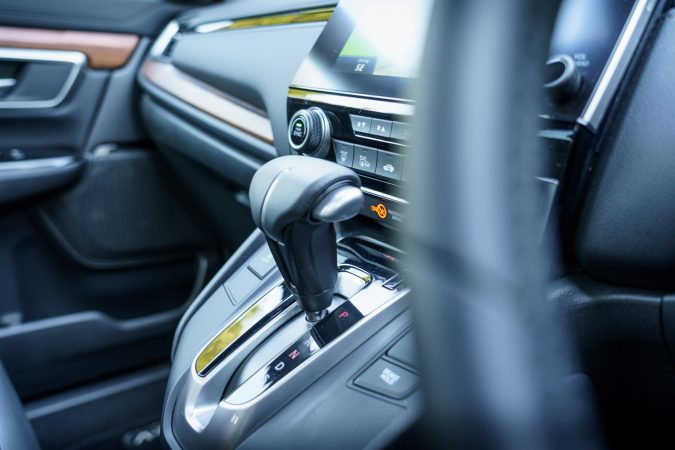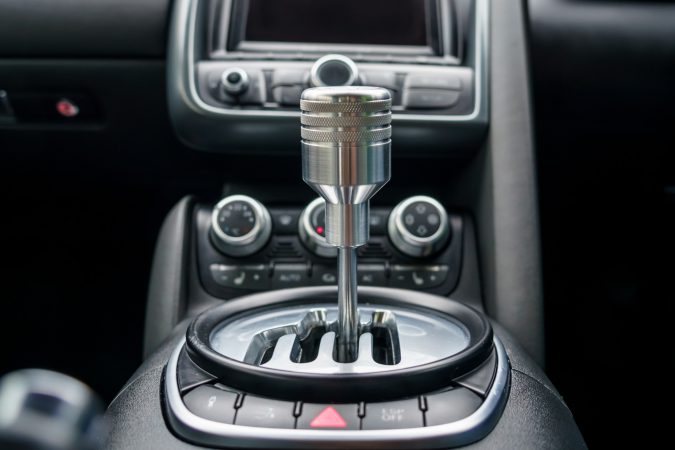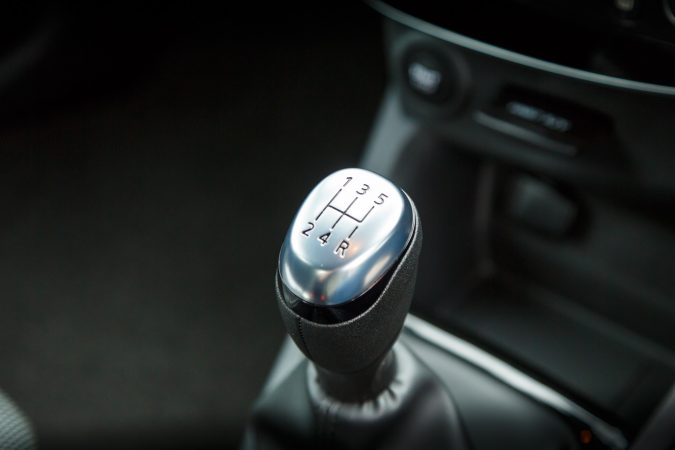Imagine for a moment where the car that’s been serving you fine for years suddenly feels odd. Where, your RPMs climb yet produce little forward momentum. And, it has become a struggle to even get off the line smoothly and promptly. Could you be seeing signs of a bad transmission?
In serious cases, you might even lose all forward drive. Thus, rendering you hopeless while your engine continues to rev with futility. Few issues can unnerve the uninformed drivers as much as a failing transmission. For those that recognize the symptoms, thoughts of a costly repair bill arise.
A transmission that’s going kaput is definitely a major job for any car, requiring hours upon hours of labor that typically ends up with a costlier rebuild than a complete transmission replacement job. It’s not always the driver’s fault as well, as the internals will wear out eventually even if it’s a heavy-duty vehicle component in the overall drivetrain.
However, before it comes down to a catastrophic transmission failure occurring, it typically exhibits subliminal or at times overt symptoms that drivers should look out for. It’s also worth noting that with something as convoluted as a vehicle, a problem seemingly stemming from a spoilt transmission may not be associated with it at all.
Signs Your Transmission Is Failing
What Are Signs Of A Bad Transmission
1. Poor Shift Quality And Feel
One of the most palpable warning signs that your car can give you that’s a forewarning of a transmission issue is the drop in shift quality. It’s overt when it happens because your car that’s once silky smooth will begin to feel off.
A unanimous feel that everyone with an aging automatic transmission has no doubt experienced before are clunky shifts. The car genuinely feels unwilling to shift gears, and it happens to both automatic and manual transmissions.
While you’re revving up your car and gaining speed, a typical automatic transmission will shift up promptly and on cue. However, if it begins to feel labored, and your transmission shifts like it’s strained and struggling to keep up with your engine speed, that is an indication of a transmission going out.
A manual transmission would experience the same kind of issue as well, but the generally poor shifting quality isn’t that common a problem that manuals encounter. If you have the clutch fully depressed, but slotting in gears still grinds harshly, that’s a sign of transmission failure.
Generally, this is also accompanied by a poor shift feel, where it becomes tricky to put your car into gear, or it goes into gear but the lever never really feels like it goes in entirely.
While these are issues that most folks generally ignore, as they can be quite subtle at times and your car will most likely still function just fine otherwise. However, it’ll be good to get your transmission checked out, as it can be just an initially minor ailment that will eventually develop into a serious major repair with the chance of leaving you stranded someday.
2. Slipping Gears And Erratic Shifting
If you’re encountering gears that slip for the first time, it can be quite unsettling. Chances are that if your transmission is slipping gears, you may already have a blown transmission or one that’s on its last legs.
Again, this is an issue for both automatic and manual transmissions, and when it happens it’s quite pronounced. The car will at times rev up freely without resistance, but without any gain in actual road speed, or it can be constantly juggling between gears without rhyme or reason.
The thing with this is that it can actually be quite hazardous to drive a car that’s slipping gears constantly or unpredictably. You can be pulling away from the traffic light, but end up stationary. You can also be exiting a junction just before an unexpected gear shift that slows you down, meaning the car trailing behind may hit you.
3. Abnormal Noises From The Transmission
A way that your car warns you subliminally that something might have gone awry is auditory. A transmission that’s on its way out will start to emanate all sorts of noises, all quite disconcerting to hear as a driver.
Typically, an automatic transmission that’s failing will begin to grind, whine, hum and growl, with any one of these being enough of a concern that you should get it checked. It can vary from a fluid flush to a replacement, and it’s better to know sooner rather than later.
A manual transmission can be more perceptible and obvious when it starts to give out. It’ll begin to whine like a noisy differential, and the gears will feel crunchy or uncouth to engage. However, it’s also possible for rough gear engagements to be due to incompatible fluids or overdue fluid change.
Usually, a transmission that’s making odd noises is in its early stage of failure, and it’ll most likely be the first thing you notice. It’s easy to ignore, but it’s a hint that your gearbox is tipping you that you should visit a trusted workshop soon.
What Causes A Bad Transmission?
The transmission is undoubtedly a major component, it provides the muscles to get your car off the line. Hence, much like every other big, important mechanical component in your car, it’s made to stand the test of time.
And much like all the fundamental, critical components in a car, it can fail due to the ignorance of regular maintenance and overall negligence of the owner, or it can be just due to age. It’s worth noting that manufacturers do build transmissions with the uninformed owners in mind, so you’d be surprised at how long a transmission can withstand the lack of attention.
Still, there are ways you can kill a transmission rather quickly if you have the barest of ideas on how a transmission functions, and here are a few of the most common.
1. Incorrect Transmission Fluid Level
Both automatic and manual transmissions require a constant and steady supply of hydraulic fluid to function properly, and that means that they must maintain a certain amount of fluid pressure for the optimum flow and circulation of hydraulic fluid.
This is crucial because there are a lot of moving parts encased within any transmission, and it’s the fluid’s job to keep everything lubricated at all times. In an automatic transmission, it fundamentally transfers engine power to the transmission itself. It also helps to carry and distribute heat more evenly throughout the system.
Therefore, you can imagine how the improper amount of transmission fluid can be detrimental to its operation. It’s a periodic maintenance job to replace transmission fluid, thus it is also one of the most common causes of failure in a transmission.
However, as long as you’re sensible about it, timely changes in the transmission fluid can go a long way to preserve and prolong your transmission’s service life. A simple oil change keeps an engine running happily for longer, so does an occasional transmission fluid flush serve to protect you from a costly repair bill.
Importance Of Transmission Fluid Changes
Unlike engine oil which has to cope with the most extreme conditions, transmission fluid does not, which means that you don’t need to replace it as often. For both automatic and manual transmission, you can change the fluid once every 30,000 miles to be really safe, but good quality transmission fluid will typically last double that figure.
It’s also worth noting at this point that automatic transmission and manual transmission fluids are different, and their fluids have different properties. While they’re technically interchangeable, it’s worth sticking to their respective fluids since they have their individual formulations that are applicable for their purpose.
Typically, a good indication that you should flush your transmission fluid is when your transmission begins to shift a bit ‘crunchy’. In an automatic transmission, this can mean a lurching shift action, while manual transmission equates to grinding shifts and tricky gear actuation.
You can generally find what transmission fluid is optimum for your transmission within your owner’s manual. If there’s an owner’s forum for your specific vehicle, scouring around there can also help you understand the topic better.
2. Transmission Fluid Overheating
In many cases, an overheating transmission directly correlates to your transmission fluid. Insufficient fluid recirculation, improper fluid level, and inadequate transmission fluid cooling with an overworked transmission can cause spectacular transmission failure.
Heat is a transmission’s worst nightmare. Excessive heat will destroy any components of a car, but a transmission can’t really tolerate an overheating working condition for long, and you should immediately get an overheated transmission checked by a workshop.
In some cases, an overheating transmission can be attributed to a mechanical fault, and it’s almost always related to the transmission fluid. It performs its duty as a heat carrier and dispersant, therefore anything wrong with it can translate to a toasted transmission.
It can simply be burnt fluid, where the transmission fluid has broken down and is now inefficacious at carrying heat. This would require a transmission flush. Running low on transmission fluid? This not only causes your transmission operation to go haywire but also causes transmission overheating.
Effects Of Bad Transmission Fluid
If there’s a blockage in your transmission fluid passage, in the form of contaminants or just a defective solenoid, it can cause peculiar transmission operation and overheating since fluids aren’t getting to where they’re supposed to go.
However, what’s more, likely to cause an overheating transmission, especially when new, is the driver. If you carry tons of luggage in your car while going uphill, you’re really straining your transmission. Stop and go urban traffic is also particularly egregious towards transmission temperature. Even if you’re running normally, it can simply be due to a hot climate.
There are ways to circumvent this. As four-wheel-drive pickups can be particularly hard on their transmission and differential, they typically come equipped with transmission oil coolers, which can always be fitted to normal cars too for that peace of mind. It won’t cure the problem, but it’ll certainly alleviate it.
Of course, an overheating transmission is mostly an ailment exclusive to an automatic transmission. If it does happen, it’s most likely due to insufficient manual transmission fluid, where you need to top it off with what the manufacturers specified from the factory.
The majority of wear that happens in a vehicle can be attributed to the driver’s behavior and attitude, and this also applies to the transmission. If you are a particularly belligerent driver that races from one stoplight to the next, it’s likely that your transmission will wear out quicker.
3. Overzealous Driving
If you frequently stop and go through traffic, your transmission has to work extra hard daily since it has to do the most torque reduction to pull you off the line. However, transmissions are made to shrug off these kinds of normal daily punishments inflicted upon them without breaking a sweat.
What will easily result in a ruined, blown transmission though is if you attempt to do something it’s not made to do. Repeated launches off the line are something that especially entices young drivers. It puts a lot of shock into the entire drivetrain, which can result in an inevitable tow home.
Now, it’s worth noting that when done properly in a drag racing scenario, your transmission can last the day, especially if it’s strengthened and purpose-built for it. However, it’s never a good thing to do longevity-wise, and it strains out a 4-wheel drive vehicle the most.
If you often take it to the redline prowling from corner to corner, it’ll also break your transmission quicker. The problem comes when you have to downshift for the corners and match gears revolving at a vastly different speed. While rev-matching helps, it’s still the mechanical components within that make-up for the minor differences. In a manual, it can be quite detrimental to your synchro rings.
Put simply, keep it gentle and sensible. Occasional spirited driving is fine, but if you’re an aggressive driver, opt for a transmission made to handle the strain if you want it to last. Typically, a manual driven properly shouldn’t have much issue shrugging off regular thrashing.
Diagnosing A Bad Transmission
While a jarring transmission shift can be rather disconcerting for the uninitiated, it can also be often mistaken for a broken transmission. It’s often a lot less of a serious issue than it might seem, even if your transmission just suddenly refuses to work at all.
1. Awful Shifting From An Automatic Transmission
Principally, one thing keeps any automatic transmission functioning normally, and that’s the hydraulic fluid within. Therefore, if something has gone awry, it means that something about the fluid or its flow around the transmission isn’t quite right.
It can be as simple as needing a fluid level correction since too much fluid or too little fluid are ill-advised for optimum transmission operation. It can also be dirtied transmission fluid that has picked up debris and fine particles from normal service.
Worn transmission fluid should be replaced as soon as possible, and with a typical service interval at around 50,000 miles it’s something you shouldn’t skimp on. Contaminated transmission fluid is less efficacious at carrying heat and maintaining ideal lubricity, which expedites transmission wear.
That said, it might not be the fluid, it can also hint at potential trouble within the valve body or even the transmission fluid pump. Some cars, in particular, have problems with their valve body failing preemptively.
2. Manual Transmission Refuses To Engage Gear Properly
Can’t quite negotiate the gear lever into its slot smoothly? Certainly, the potential of it being a synchromesh issue rises dramatically with an extremely high mileage unit. It’s more likely that there’s just a problem with your shifter assembly or clutch.
If your transmission straight-up refuses to shift smoothly, and it’s almost impossible to shift with the engine idling, there’s likely something faulty with the clutch cable or bad clutch fluid depending on what your car is running.
Clutch cable and clutch fluid failure can be quite spontaneous where your car can literally refuse to shift to the next startup. A proper clutch travel should feel empty for the first few inches, to proportionally stiffer, very stiff, and then light again.
An improperly adjusted clutch cable can cause accelerated wear on your clutch, transmission slip, and difficulty disengaging the clutch. If your clutch fluid is contaminated, the pedal can feel especially spongy and gear engagement can be rough. Just give the clutch fluid a look, if it’s dirty, flush the system out, or change it once every 30,000 miles to be strict.
3. Proper Care For Your Transmission
Transmissions are tough. Although, taking care of your transmission starts with being well-read on some good driving attitudes that’ll help prolong your transmission’s lifetime. Automatic and manual transmissions have different specific directions, but the general notion applies here.
4. Pay Attention To Your Transmission Fluid
It’s purely reiteration at this point. But, your transmission fluid is one the core of the entire transmission system. As such, it’s truly imperative that you must sort it out properly.
To begin with, regularly checking your transmission fluid level can indicate to the driver immediately if there’s anything wrong. If there’s a worrying lack of transmission fluid, the driver would also know it before any serious transmission damage is incurred.
However, the transmission fluid system being a closed circuit, an unusual lack of transmission fluid can quickly identify itself as a serious transmission fluid leak that must be looked at immediately.
It’s also a good habit to check the fluid level yourself after getting your fluid changed at a workshop. This comes just in case it wasn’t done properly. Also, make sure that you choose the appropriate transmission fluid for your application. It should be indicated overtly in the owner’s manual.
Since the ideal fluid level is essential to proper automatic transmission operation, it’s also important to note that fluid in good condition should be a clear, typically red, hue. If it’s cloudy, dirty, absolutely opaque, or smells like rotten seafood, you should bring your car to a reputable workshop as soon as possible.
While not exactly about transmission fluid, it’s also important to ensure your cooling system is in good nick. Many cars nowadays have integrated transmission fluid coolers that rely on the engine’s cooling system itself. Any mechanical component that’s operating with less excess heat will last longer.
5. Shift Properly
While it might be plain to see, shifting properly does wonder to transmission longevity. It’s not quite as critical for automatic transmissions when compared to manual. After all, most of the shifting is computerized and calculated properly, but some point still stands.
One eminent practice is to keep a habit of never shifting into reverse while moving. Thankfully, modern automatics have reverse inhibits that ignores reverse request until the proper conditions are met. Manual transmissions also have lockouts so drivers can’t just accidentally shift into reverse while barreling down the road.
However, older automatics may not have reverse inhibit. While shifting into reverse then might just cause a stall, it may also incur catastrophic damage. For manuals, drivers can still enter reverse if they slam it into the gear. That’ll most definitely lead to a spectacular transmission failure.
Also, try to keep the engine RPMs down low if possible. It’s an argument whether it uses up more fuel at high RPMs. But, it’ll certainly expedite bearing wear simply because components are revolving at higher speeds.
For manual transmissions, learning to use the clutch properly can make a big difference to smoothness and transmission longevity. Put simply, clutch in fully whenever you’re shifting. Then, try to match revs on downshifts. Also, be sure to not slip the clutch more than you need to, and don’t ride the clutch.
6. Apply Common Sense
You’re no doubt taught to let your engine warm up before driving it. This gives the engine oil time to warm up so it’ll begin working and lubricating properly. The same applies to transmission fluid.
While transmission fluid doesn’t just warm up by itself, not much heat is generated without load and gear engagement. Therefore, try to keep it civil the first few miles to give your transmission fluid time to heat up. And, to avoid putting unnecessary strain on your transmission
Moving on, you really shouldn’t drive on mismatched wheels and tires. This means that your differential has to work extra hard to keep the vehicle in check. This also applies to those who drive on space savers for an extended period.
If your car isn’t made for it, try not to tow anything too heavy. Towing means your transmission has to work extra hard to lug all that weight it’s not made to handle. Thus, putting stress on your transmission.
Don’t wade through water if you don’t have the ground clearance for it. Water can enter the transmission via a vent used to relieve pressure released from the dynamic hydraulic processes involved in shifting gears. Of course, water in transmission fluid isn’t a good idea.
Signs Of A Bad Transmission – Verdict
A transmission failure, especially with modern, remarkably complicated automatic transmissions, can result in a very hefty repair bill. Thus, it should be in your best interest to keep your transmission in good shape.
So, what do to if your transmission ever exhibits signs of a bad transmission? In this case, you should get it checked out by a reputable workshop as soon as possible. A mild jerk on shifts can just point to worn transmission fluid. But, knowingly ignore it and it can develop into serious complications. Thus, leaving you stranded on the side of the road.
Of course, a transmission in peak condition also means that you’ll enjoy a smoother, more enjoyable driving experience overall. In fact, for any old car out there, I reckon that a good transmission makes all the difference in the world.
Video Resources – Signs Of A Bad Transmission
Scotty Kilmer puts it succinctly.
Transmission Troubleshooting Facts
- The transmission helps you change speeds smoothly and controls how much power feeds through to the engine, regardless of whether it’s an automatic or manual transmission.
- There are three types of transmissions in a car: manual, automatic, and CVT, with each working differently to achieve similar goals.
- Signs of a bad transmission include a stain on the garage floor, unusual noises, unresponsive gears, burning smells, grinding gears, noisy idling, and a check engine light.
- Repair and replacement of transmissions are expensive, with prices depending on the make and model of your vehicle and whether you opt for a rebuilt or factory-rebuilt transmission.
- Salvaging a transmission may be a cheaper option, but it comes with risks, and repair shops may not offer this service due to the potential problems that may arise.
- Towing fees should be factored into the repair cost, as it may be risky to drive a car with a bad transmission for long distances.
- Driving a car with a bad transmission is not advised under normal conditions, but topping up the transmission fluid regularly can help temporarily.
- If the gears are grating, it’s best to park the car and have it towed to avoid potentially expensive damage caused by metal flakes from the transmission falling into the coolant.
- Proper maintenance can save you thousands of dollars in expensive future repairs.
- When experiencing a transmission issue, seek advice from a mechanic who can help diagnose the problem and provide guidance on the best course of action.
FAQs On Signs Of A Bad Transmission
If you still have some questions concerning signs of a bad transmission, our FAQs here might have the answers…
Signs Of A Bad Transmission Mount
A transmission mount’s job is to keep hold of the gearbox in your car. It does so by supporting the weight of the transmission. And, ensuring that it minimizes the shakes and vibrations from the gearbox. Given how much stress they go through, it’s common to have the transmission mounts fail over time. So, don’t confuse it with signs of a bad transmission. Tell-tale symptoms of a failing transmission mount include odd clunking sounds, especially under acceleration or hard braking. Vibrations will also be more noticeable if the mounts have failed. Furthermore, the transmission will move around a lot, which shouldn’t happen with good mounts.
Signs Of A Bad Transmission Solenoid
Many signs of a bad transmission can be mistaken for a bad transmission solenoid. These small valves control the flow of pressurized transmission fluids. Hence, actuating the gearbox for functions like changing gears. If the transmission solenoid has failed, it’ll also cause signs of a bad transmission to appear. These can include delayed shifting or slipped gears. It may then show difficulties with changing down the gears, as well as shaky gearshifts. In addition, a bad solenoid might force the transmission to not be able to shift out of Neutral.
Signs Of A Bad Transmission Filter
In most circumstances, your transmission filter could easily get clogged up if you’re not diligent with changing the fluids. These clogs can cause issues such as a gearbox fluid leak, in addition to contaminating it. Furthermore, a bad transmission filter may also cause shifting problems, in addition to odd smells and strange sounds. This is all due to the clogged filter’s inability to allow transmission fluid to pass through. In turn, this deprives the gearbox of pressurized fluid for actions, lubrication, and cooling.
Signs Of A Bad Transmission Control Module
In most modern cars, the TCM (transmission control module) is what determines the right gears to change into. And, at the precise moment, which is crucial for automatic gearboxes. While rare, the TCM can show signs of failure, and cause shifting problems. This includes not being able to shift, shifting into random gears, or not wanting to shift up and down. Alternatively, you might get stuck in the same gear, and suffer from poor fuel economy.
Signs Of A Bad CVT Transmission
While they don’t have physical gears like manuals and automatics, CVTs are prone to suffer from their own issues. These can include jerking, slipping, grinding, or shuddering during gearshifts. Furthermore, you’ll note a lot of odd sounds coming from the gearbox, as it’s also likely overheating.









Thank you for mentioning that you should take care of your transmission fluid and pay attention to it. My son just bought a car for the first time, and he is having some problems. I think he should talk to an expert an see if it is the transmission.
Thanks for the comment, Fay!
First off, congrats to your son on his first car! If he’s noticing any issues, the best thing to do is to get it looked into right away, before it devolves into causing more complicated and expensive issues down the line. Gearbox problems could easily be prevented altogether through diligent maintenance of the transmission fluids. Be sure to have that changed every once in a while!
I was driving with my brother in his Jeep the other day, and I noticed that the transmission was slipping when he tried to shift. Thanks for pointing out that this can be a sign that his transmission is on its last legs or is already broken. I will have to tell him this so he can start looking for auto shops that can help him fix it before it gets worse.
Thanks for the comment, Michaela Hemsley!
Glad that you and your brother have found our guide useful, and were able to pinpoint that gear slippage. A slipping transmission is one of the more common symptoms of an ailing gearbox. Agreed 100%, your brother should have that transmission looked into while it’s merely slipping, as putting that off for any longer might devolve into causing more damage and destroying the rest of the transmission.
My uncle noticed that his truck’s transmission is making weird humming noises lately. I find it alarming that this could be a sign of a failing transmission if left unattended. He should probably look for a car expert that can repair this for him before it gets worse!
Thanks for the comment, Zachary Tomlinson!
Good spot by your uncle! Humming noises are generally ignored by a lot of people, as most never take them as seriously as grinding, clunking, or any of those other noises. Humming sounds could definitely point out to a failing transmission, and your uncle should certainly have whatever fault that is repaired or serviced promptly, before it leads to the entire gearbox failing altogether.
I would definitely check my transmission fluid and filter!
Yes, checking the transmission fluid and filter is indeed an essential step in diagnosing potential issues with a gearbox. The transmission fluid serves as a lubricant and coolant for the various components inside the transmission, while the filter helps to keep the fluid clean and free from debris. Over time, the fluid can become dirty or low, which can lead to problems such as slipping gears, delayed engagement, or overheating.
Regularly inspecting the fluid level and condition, as well as replacing the filter as recommended by the vehicle manufacturer, can help prevent major transmission problems and extend its lifespan. If the fluid appears dark, burnt, or has a strange odor, it may indicate internal damage or a need for a fluid change. Additionally, low fluid levels could suggest a leak somewhere in the system that should be addressed promptly.
However, it’s important to note that while checking the fluid and filter is a good starting point, it might not always provide a complete picture of the transmission’s health. Some problems, such as solenoid malfunctions or mechanical issues, may not be evident from fluid inspection alone. Therefore, if any concerning symptoms persist or worsen, it’s advisable to consult a professional mechanic who can perform a more thorough diagnosis and recommend appropriate repairs.